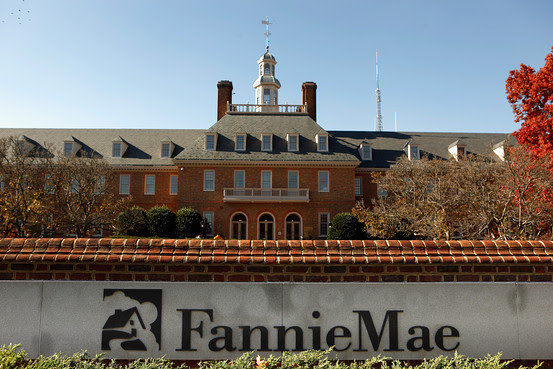ANOTHER ASSET STRIP AND OUT THE money goes
Fannie Mae to Sell Headquarters yes strip them and the capital go to
- Getty Images
Fannie Mae officials told employees on Wednesday that the company plans to sell its mansion-like headquarters in Washington, D.C., as part of a consolidation of its five, D.C.-area offices into a single, leased office building. The company hasn’t yet decided on a new location but prefers that it be in downtown D.C., said a company spokesperson. The move would happen within the next two to three years, she said.
The spokesperson said that the move is in preparation of the expiration of the leases on two of its D.C. offices. The company has also lately had to deal with aging infrastructure in some locations, including at the main building, she said.
“We are focused on making responsible real estate decisions to ensure the wise use of resources, the safety and soundness of operations, and flexibility to adapt to changes in our future workplace needs,” the spokesperson wrote in a statement.
The Wall Street Journal, and many other news organizations, have long relied on photos of Fannie Mae’s iconic headquarters, located at 3900 Wisconsin Ave., with its picturesque facade and landscaping, to illustrate stories on the mortgage-finance giant.
Fannie Mae and McLean, Va.-based Freddie Mac don’t make mortgages, but buy loans from lenders, package them into securities and provide guarantees to make investors whole in case of default. The companies were placed into conservatorship in 2008 and received $188 billion in government aid. After a September dividend payment, the companies will have paid $218.7 billion to the U.S. Treasury.
Worth remembering: Fannie’s purchase of the building around four decades ago was met with some controversy, notes The Fateful History of Fannie Mae by the Journal’s James R. Hagerty.
Oakley Hunter, a former FBI agent and Republican congressman, decided to acquire the building in the 1970s. Hunter had been named president of Fannie Mae by President Richard Nixon shortly before Fannie became a shareholder-owned company.
An excerpt from the book:
Despite Hunter’s general policy of keeping a low profile, he decided the company needed a grander headquarters than the rented space it occupied in downtown Washington. There was debate between two choices. One was the site of a former creamery near the Georgetown district that could be converted into offices. The second was a three-story red brick building on Wisconsin Avenue, built in the colonial style of the governor’s palace in Williamsburg, Virginia. The Wisconsin Avenue building had previously housed an insurance company. Robert Bennett, the chief financial officer, considered the Wisconsin Avenue building impractical and believed it would be too expensive to convert the “rabbit warren” of offices inside.But Hunter chose the Wisconsin Avenue building. “He bought his Taj Mahal,” commented Carl A.S. Coan Jr., who served as an assistant general counsel at HUD in the 1960s and later as a lobbyist for the National Association of Home Builders. Bennett, the CFO, mocked the new headquarters as “Versailles West.” In what he considered another extravagance, Bennett was sent out with a decorator to choose posh furniture for his office; he also recalled a “very attractive woman” hired by Hunter as an “art consultant” for the new headquarters. Lawrence Simons, then a senior HUD official, quipped, “It’s what Versailles would have looked like if the French king had more money.”

Comments
Post a Comment